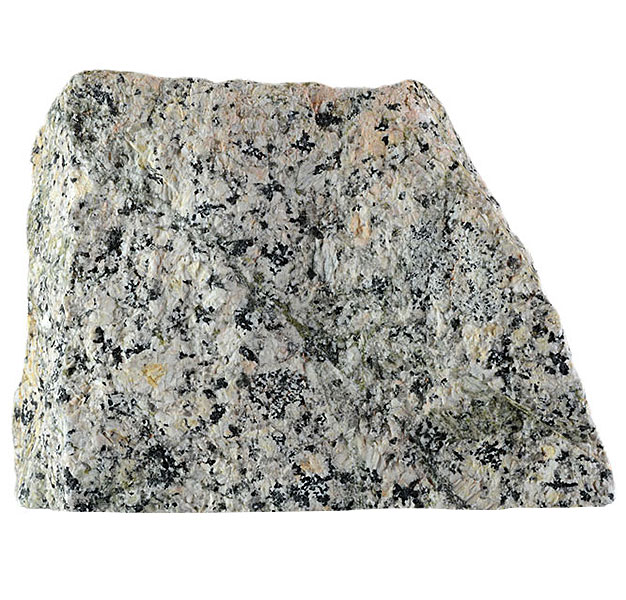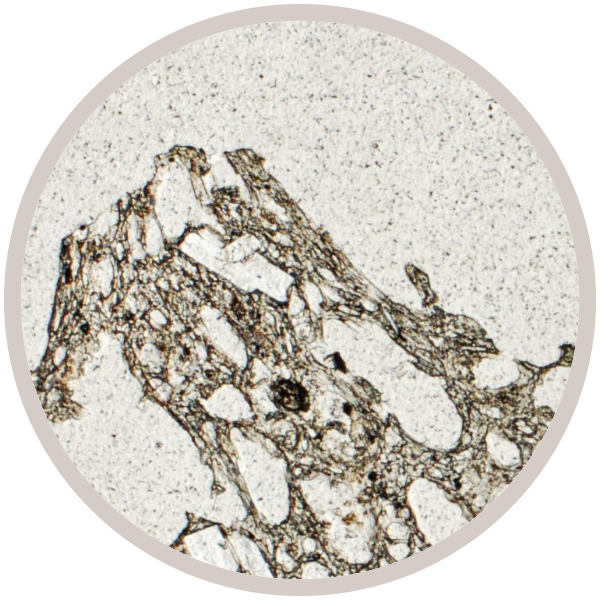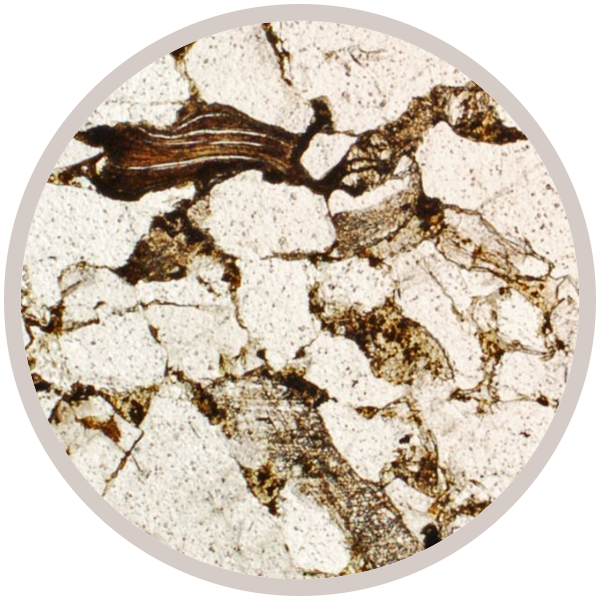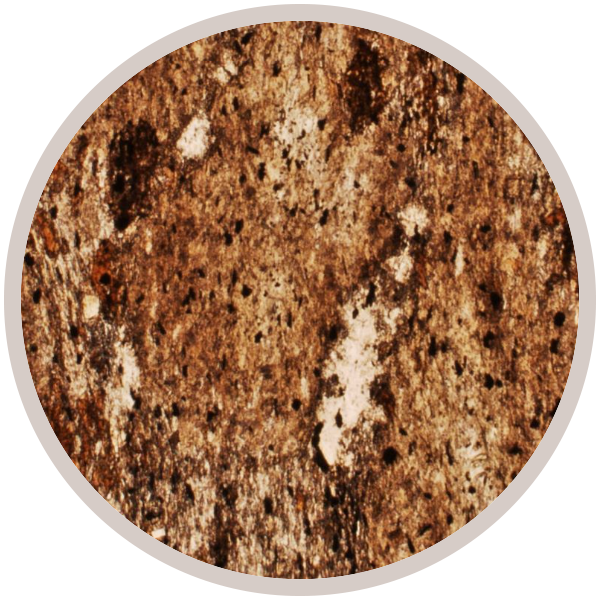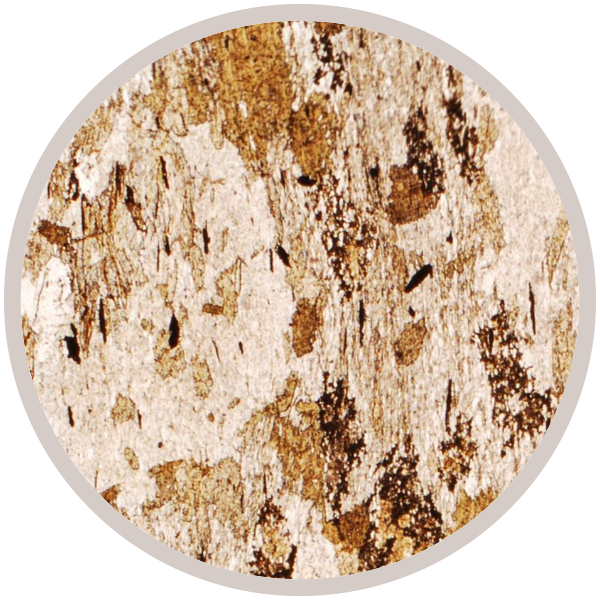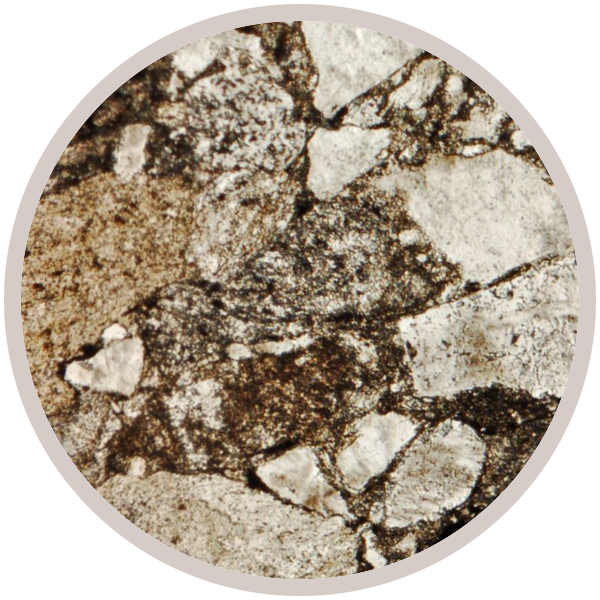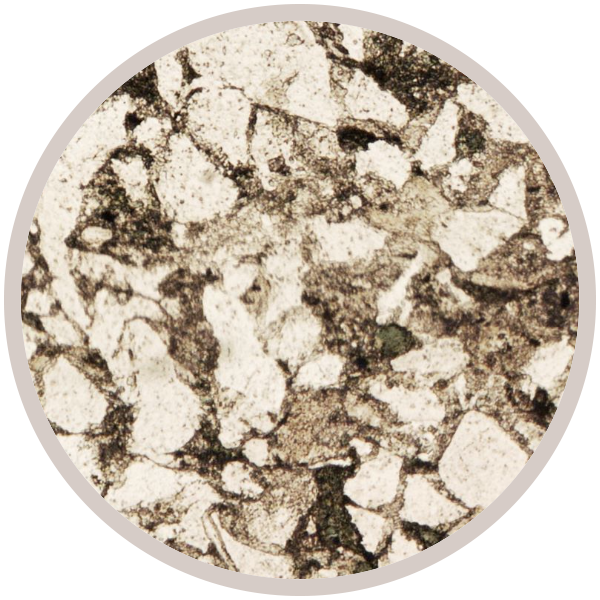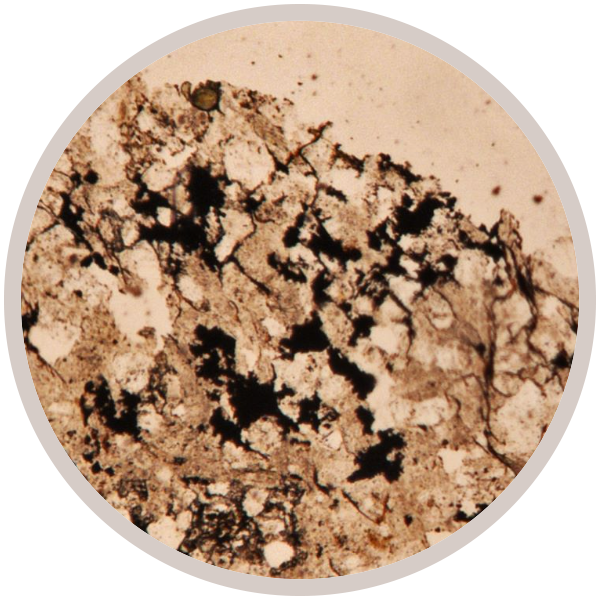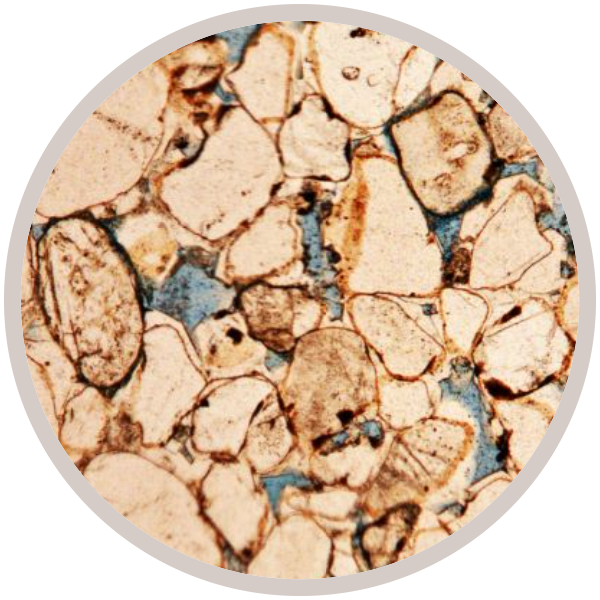This epigranite is from Loch Ainort on the Isle of Skye. It is mainly composed of quartz, alkali feldspar and plagioclase feldspar. The most common ferromagnesian mineral is ferrohedenbergite (a member of the amphibole group) - see rotation 1, together with Fe-Ti oxides, allanite, apatite and biotite. Secondary products include epidote and chlorite (replacing biotite) - see rotation 2.
The Loch Ainort epigranite is part of the Western Red Hills centre on the Isle of Skye. It occupies an area of 35 square km and comprises ten granites, a composite ring dyke, explosion breccia and a gabbros. The centre was emplaced into Paleogene lavas to the west, Torridonian and Mesozoic sedimentary rocks to the north, and granites of the Srath na Creitheach Centre to the south.
A good description of the mineralogy of the granites of Skye is here.
The term epigranite was introduced to distinguish the high-level granites of the British Palaeocene Volcanic Province from other, deeper-level granites such as those of Caledonian age in Scotland.

